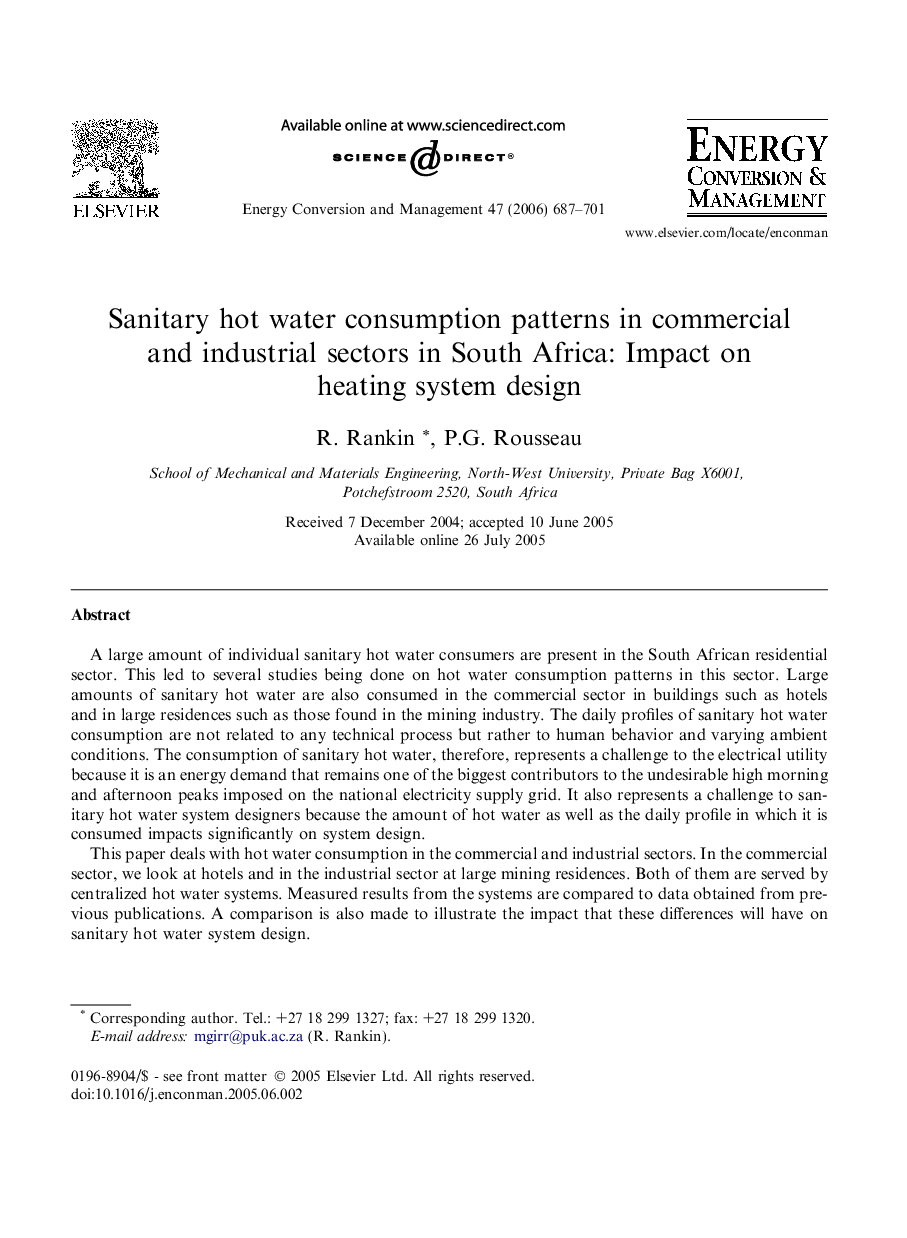| Article ID | Journal | Published Year | Pages | File Type |
|---|---|---|---|---|
| 766816 | Energy Conversion and Management | 2006 | 15 Pages |
A large amount of individual sanitary hot water consumers are present in the South African residential sector. This led to several studies being done on hot water consumption patterns in this sector. Large amounts of sanitary hot water are also consumed in the commercial sector in buildings such as hotels and in large residences such as those found in the mining industry. The daily profiles of sanitary hot water consumption are not related to any technical process but rather to human behavior and varying ambient conditions. The consumption of sanitary hot water, therefore, represents a challenge to the electrical utility because it is an energy demand that remains one of the biggest contributors to the undesirable high morning and afternoon peaks imposed on the national electricity supply grid. It also represents a challenge to sanitary hot water system designers because the amount of hot water as well as the daily profile in which it is consumed impacts significantly on system design.This paper deals with hot water consumption in the commercial and industrial sectors. In the commercial sector, we look at hotels and in the industrial sector at large mining residences. Both of them are served by centralized hot water systems. Measured results from the systems are compared to data obtained from previous publications. A comparison is also made to illustrate the impact that these differences will have on sanitary hot water system design.Simulations are conducted for these systems using a simulation program developed in previous studies. The results clearly show significant differences in the required heating and storage capacity for the new profiles. A twin peak profile obtained from previous studies in the residential sector was used up to now in studies of heating demand and system design in commercial buildings. The results shown here illustrate the sanitary hot water consumption profile differs significantly from the twin peaks profile with a very high morning peak in hot water consumption. This leads to a requirement for bigger heating and storage capacities in commercial buildings like hotels. A summary of the results are provided in the form of minimum design parameters for different hot water consumption profiles.This study emphasizes the importance of understanding the trends of hot water consumption in buildings, especially when demand side management projects are done on these types of systems.
